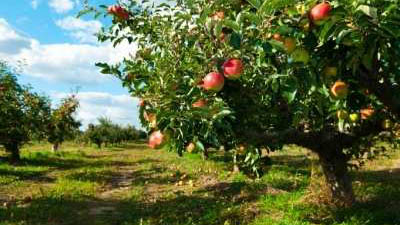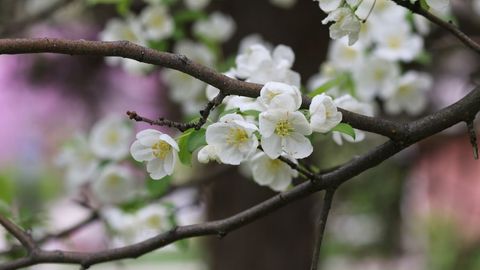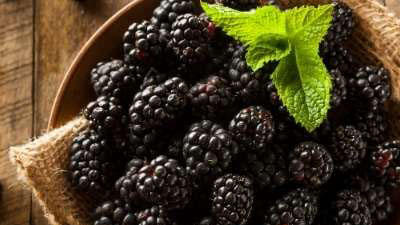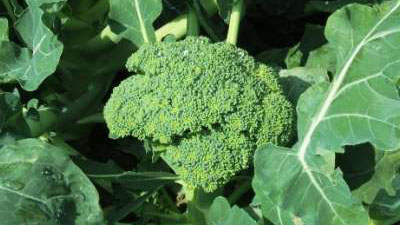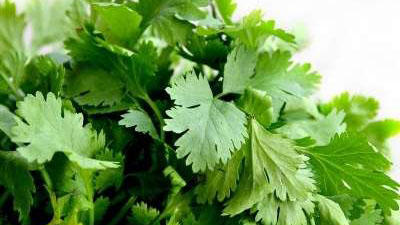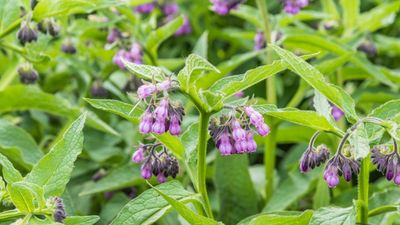How to Grow Lamb's Lettuce in Your Garden
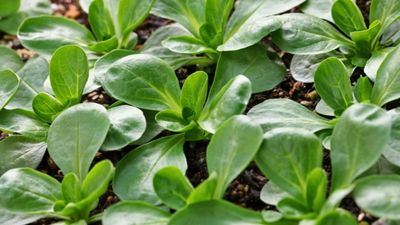
Lamb’s lettuce (Valerianella locusta), also known as mâche, corn salad, fetticus, and Nüssli salat, is a native of southern Europe. It is a cool-season vegetable grown for edible leaves that add a mild, nutty flavor to any salad. Sow seeds ¼ inch deep in rich, well-draining soil, starting three to four weeks before the last spring frost and again in the fall by early September. For a continual harvest, sow every two weeks. Thin seedlings or transplants to 4 inches apart in the row with rows 12 inches apart. Water consistently for best growth and fertilize sparingly. Harvest can begin two to three weeks after emergence or transplanting.
Recommended Lamb's Lettuce Varieties
Popular varieties include Dutch Broad Leaved, French, Vit, and D’Etampes.
How to Grow Lamb's Lettuce
Soil
Lamb’s lettuce prefers fertile, well-drained soils rich in organic matter with a pH of 6.0 to 7.0 for best growth.
Soil Preparation
Before planting, determine fertilizer needs with a soil test and then follow the recommendations given with the test report. If fertilizer applications are warranted, work the fertilizer into the top 6 inches of soil. If you fertilize with compost, apply no more than 1 inch of wellcomposted organic matter over the garden area fertilized.
Plants
Lamb's lettuce can be grown from seed or transplants. Direct seed when soil temperatures range from 41°F–68°F. At temperatures greater than 70°F, seeds go dormant and will not germinate. Sow seeds ¼ inch deep and thin when plants have 3–4 true leaves. Plants removed at thinning can be transplanted to adjacent areas or eaten. Transplants provide an earlier harvest. Allow five to six weeks to grow transplants. Transplants should have 4–6 mature leaves and a well-developed root system before planting out.
Planting and Spacing
Seeded or transplanted lamb’s lettuce should be spaced 3–4 inches between plants in the row with rows 12 inches apart in a location that receives full sunlight. Lamb’s lettuce grows best when temperatures do not exceed 75°F. Temperatures down to 32°F do not seriously damage young plants. Transplants should be planted near the average frost-free date for the growing area. Seeded lamb’s lettuce may be planted three to four weeks earlier. Since high summer temperatures reduce growth, decrease quality, and cause the plants to flower, consider planting fall lamb’s lettuce. Start seeding or transplanting about 30 days before the anticipated fall frost for your growing area. Row covers can be used in spring or fall to protect plants from light frosts. Lamb’s lettuce will easily overwinter for an early spring crop. Plants need 4–5 true leaves, should be mulched heavily, and the mulch should be removed after the snow melts in the spring.
Water
Water lamb’s lettuce regularly, supplying 1–2 inches per week. Water requirements depend on soil type and temperatures. Use drip irrigation if possible. Mulch around the plant also helps conserve soil moisture and reduce weed growth. Moisture fluctuations cause leaves to become tough, slow leaf development, and contribute to off-flavors.
Fertilization
Apply ¼ cup of nitrogen-based fertilizer (21–0–0) per 10-foot row four weeks after transplanting or at thinning to encourage rapid plant growth. Place the fertilizer to the side of the plants and irrigate it into the soil.
Mulches and Row Covers
Use fabric covers to protect seedlings and transplants from frost in spring and fall. Organic mulches in summer help cool the soil and reduce water stress. Organic mulches such as grass clippings, straw, and shredded newspapers also help control weeds.
Problems with Growing Lamb's Lettuce
Weeds
Lamb’s lettuce does not compete well with weeds. Weed control is particularly important during establishment. Closely spaced plants will help control weeds. Cultivate shallowly and avoid root pruning to ensure uninterrupted growth.
Pests and Diseases
Lamb’s lettuce is fast growing and not susceptible to many production problems. Rotating locations from year to year helps control most diseases.
| Insects | Identification | Control |
|---|---|---|
| Aphids | Green or black soft-bodied insects feed on the underside of leaves. Leaves become crinkled and curled. | Use insecticidal soaps, appropriate insecticides, or a strong water stream to dislodge insects. |
| Cabbage loopers | Loopers are light to dark green. Adults are gray or brown moths. Loopers chew holes in leaves. Larvae and eggs can be found on the underside of leaves. | Control worms and loopers with appropriate insecticides or biological measures. |
| Flea beetles | Small black beetles feed on seedlings. Adults chew tiny holes in leaves. Beetles reduce plant stands or may kill seedlings. | Control beetles with appropriate insecticides at seeding or after seedlings have emerged from the soil |
| Leaf miners | Small white maggots burrow and feed inside the leaves, leaving a lacy trail. | Control flies with appropriate insecticides or biological measures. Use floating row covers to exclude adults that might lay eggs on plants. |
| Slugs | Soft-bodied or shelled mollusks chew holes in leaves. | Control with appropriate pesticides or traps. Avoid moist conditions that favor slugs. |
| Disease | Symptom | Control |
| Alternaria leaf spot | Small, round reddish-brown spots with white to gray centers appear on the upper surface of the leaves. Spots form concentric circles which have a black sooty color. | Apply appropriate fungicide. Avoid overhead irrigation. Practice good sanitation and use crop rotation. |
| Damping-off | Seedlings, shortly after emergence, become infected. Lower stems collapse, causing the plants to fall over and die. Damping-off is caused by soil-borne fungi, including Pythium, Rhizoctonia, and Fusarium species. | Practice good hygiene in work areas. Disinfect area with bleach, do not reuse plastic pots, use new potting mix, and avoid using garden soils. Water carefully as wet soil encourages pathogen development. Consider using fungicidetreated seed. |
How to Harvest and Store Lamb's Lettuce
Lamb’s lettuce can be harvested at any time during growth. Harvest with scissors when leaves are about 4 inches across, or cut off the entire plant when it is 2–3 inches tall. If leaves are harvested, new leaves will continue to form at the center. Store in the refrigerator for five to seven days and wash before using.
Lamb's Lettuce Plant Productivity
A 10-foot row can yield 1–3 pounds of lamb’s lettuce.
Lamb's Lettuce Nutrition Facts
Lamb’s lettuce is known for its high nutritional value and contains vitamin C, folic acid, omega-3 fatty acids, antioxidants, and vitamin B9.
Additional Resources
- Fabek, S., Toth, N., Benko, B., Borošić, J., Zutić, I., & Novak, B. (2011). Lamb's lettuce growing cycle and yield as affected by abiotic factors. Acta Horticulturae, 893, 887–894. doi.org/10.17660/ActaHortic.2011.893.98
- Stephens, J. M. (2018). Corn salad - Valerianella locusta (L.) Betcke [Fact sheet #HS588]. University of Florida Extension. https://edis.ifas.ufl.edu/publication/MV055
Published September 2022
Utah State University Extension
Peer-reviewed fact sheet
Authors
Evan Christensen and Dan Drost
Related Research


